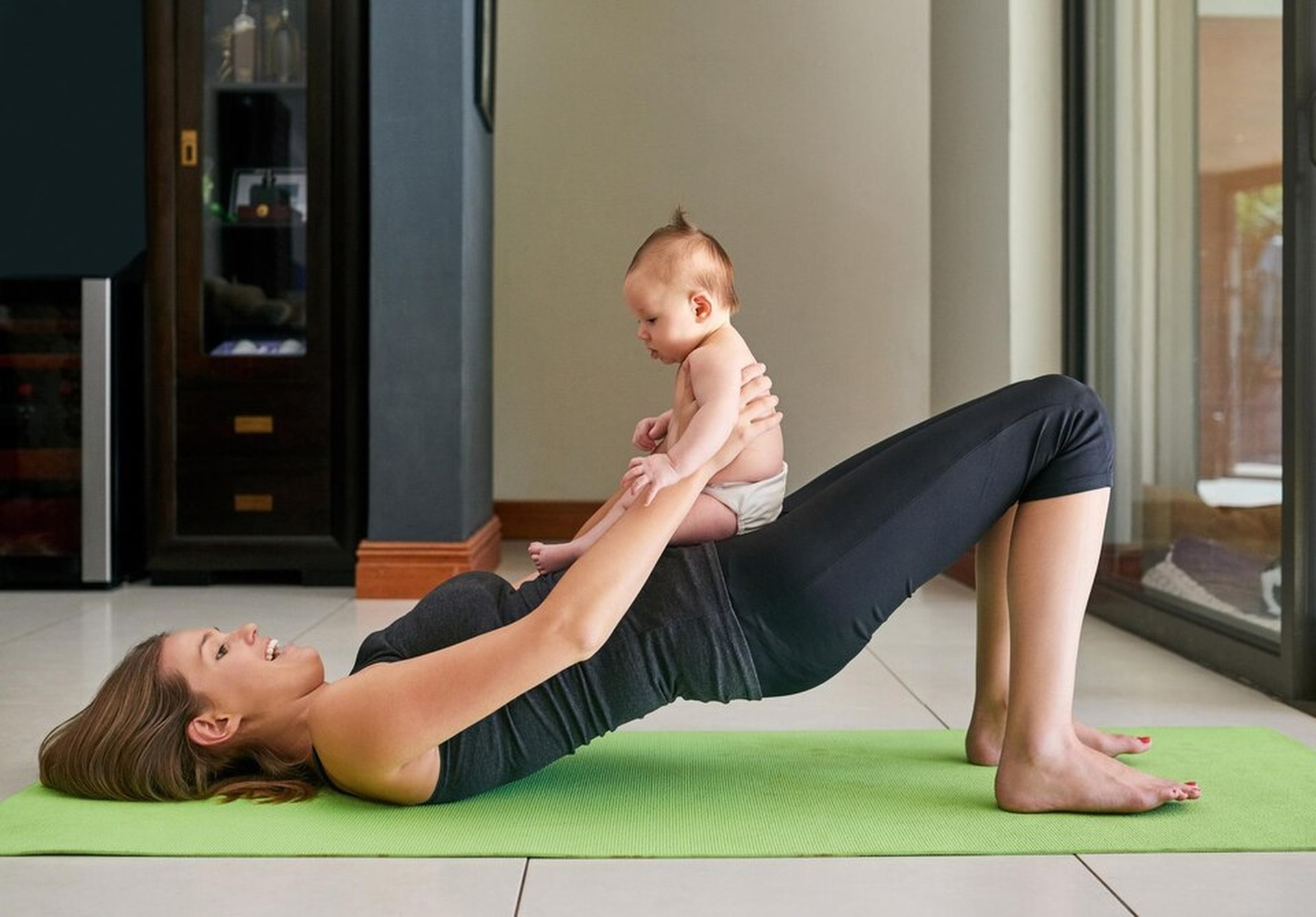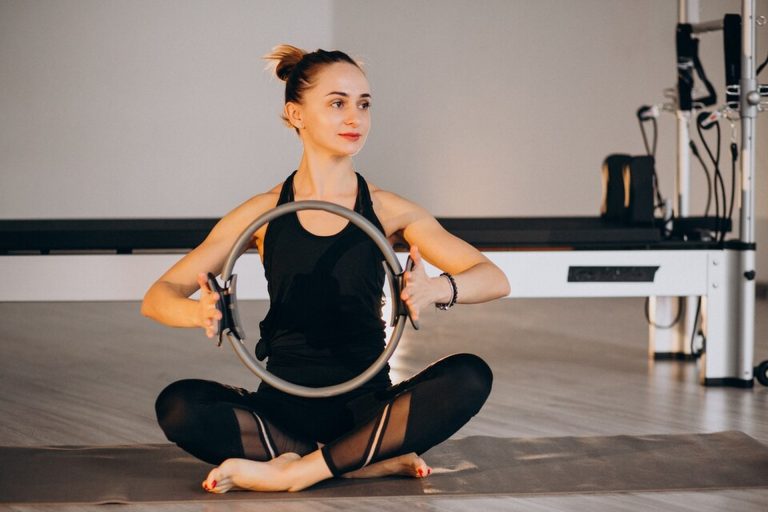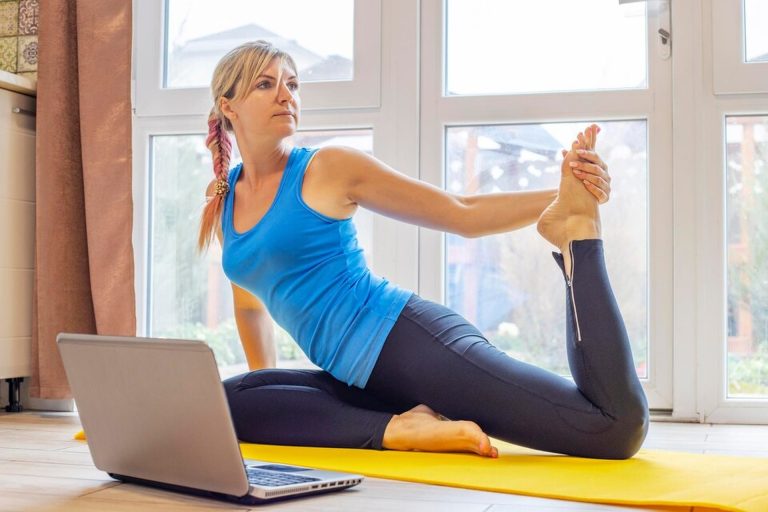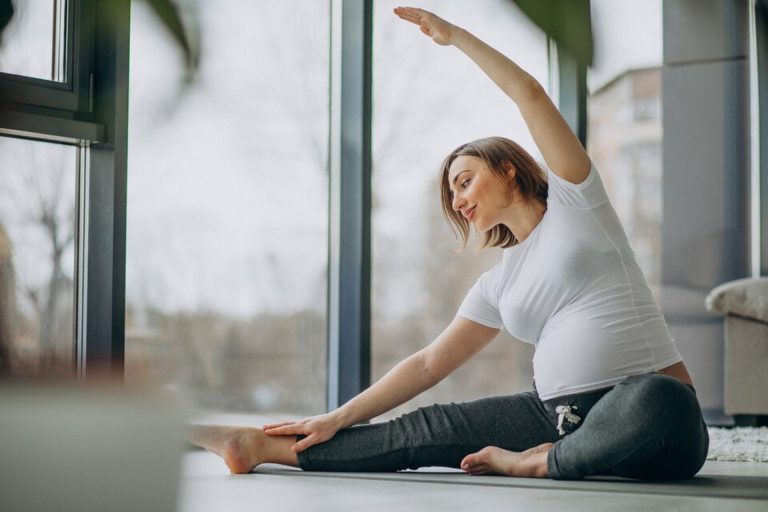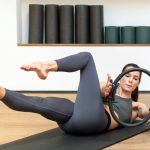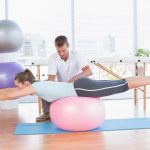After birth, your body goes through many changes, and it needs time and support to heal properly for healing. Doing safe exercises can really help you feel strong again and feel better in your mind. Pilates is very good for postpartum moms because it helps build core power and pelvic floor, and also helps reduce mental stress.
We will talk about how Pilates can help you in recovery. You will learn the main benefits, plus when to start safely doing Pilates. You will also find the top five easy exercises and what mistakes you should avoid.
The Benefits Of Pilates For Postpartum Recovery
Core Rehabilitation And Pelvic Floor Health
Pilates make your deep belly abdominal muscles strong again slowly so they can hold you upright and strong. Your core is weak after pregnancy, so this is important for having good support. Pilates helps to connect your body to breathe and move correctly with the pelvic floor and strengthen the return.
When you move slowly and breathe during exercises, your pelvic floor muscles can get better. This stops leakings and heaviness problems. Controlled slow movements also help reduce that tummy gap called diastasis recti, it makes your centre tighter again.
Improved Posture And Reduced Back Pain
Your body during pregnancy changes in shape and posture, so after the baby, you may feel pain in your back all the time. Pilates targets muscles like the glutes, shoulders, and back, so it helps to align you again.
Doing Pilates helps your backside get more power again, so your lower back gets less pressure. It can stop pain and also make you feel more balanced. Back pain usually comes from standing wrong or picking up a baby wrong many times.
Mental Health And Stress Reduction
Pilates is not just body fitness, it is for the brain and heart also. Focusing on breath and simple movements can make your mind calmer. You feel more in control of your body and less scared after the baby.
Postpartum depression and anxiety happen for many mamas. Doing exercises like Pilates that also focus on mindfulness can help improve your mood and become good. You feel happier and fresh when you see changes in your body slowly grow.
When And How To Start Postpartum Pilates Safely
Clearance And Medical Considerations
You must visit your lady doctor, like an OB or a nurse midwife, before doing exercise. They will check if your body is healed or still healing and give go go-ahead. Never start before asking them, even if you feel ok.
Signs that you should wait longer are pain when you walk, or bleeding again more or tummy bulging. These could mean that you should not move too much yet. Safety first is always best for all moms.
Guidelines For Early Postpartum Pilates
If you had vaginal delivery then you can mostly begin light breath and pelvic floor moves after 1 to 2 weeks. But if you had a big cut or C-section, then you may wait 6 weeks or more before full start.
Start only with small, easy things like breathing and slow pelvis tilts. This makes a strong base and stops injury. Pelvic floor moves should start first so your ab muscles do not push out wrong and create a doming problem.
Top 5 Pilates Exercises For Postpartum Recovery
- Pelvic Tilts: This simple move helps to engage the core and support your lower back. You must do it slowly while on your back with your knees bent.
- Heel Slides: These exercises activate the bottom part of the abs using soft leg movement. Breathe in and out slowly while sliding the heel along the floor.
- Glute Bridge: It lifts your hips and works on your back and hips. Also, squeeze your pelvic floor when lifting to make it more strong.
- Modified Side-Lying Leg Lifts: This helps to make your side muscles better and gives balance. Pregnancy often makes the side hips weak.
- Tabletop Toe Taps: This move builds safe core strength using bent legs. It prevents the belly from pushing out if you do it with care.
All these moves are gentle and made for new moms to do safely. You must focus on breathing during every exercise and go slow. Do each only a few times at the start, wait, and add more reps slowly as you feel strong.
Common Mistakes To Avoid With Postpartum Pilates
- Going Back to Hard Core Moves Fast: Rushing to do crunches and planks can hurt muscles and make the tummy gap worse. It is not safe.
- Forgetting the Pelvic Floor: Many moms jump into exercises, but they do not wake up the pelvic floor, which is very weak after birth.
- Wrong Breathing: Holding breath or breathing wrong can put more pressure on the belly making diastasis recti worse.
- Tension in the Shoulder and Neck: Trying too hard can cause you to hold your upper body all tight, which makes the pain worse.
- Skipping Warm-Ups and Cool Down: Your body needs time to warm up and relax, so never forget to do the starting and ending parts slowly.
When doing Pilates, it is not only about movement but also awareness of breath and tension. Avoiding these common mistakes keeps you safe and makes the healing more effective. Always listen to your body and stop if something doesn’t feel right.
Modifying Pilates For Diastasis Recti And C-section Recovery
Diastasis recti is when your tummy wall gets separated from the centre and makes a soft gap that you can feel. You may do a test by lying down and pressing your fingers above your belly button.
Doing normal ab workouts like sit-ups makes this gap worse, so only do Pilates that work with activation without pressure. Gentle core pulls and slow movement are better for healing.
After a C-section, you have a cut on your lower belly that needs more time to rest first. You should not stretch or press down near that area at the start.
Start with small things that work around the cut and avoid twisting the body fast. If it pains near the scar, then stop that move and wait more. Pilates can be changed easily for any healing type so you feel safe each time.
Transitioning From Postpartum Pilates To A Regular Fitness Routine
You should always listen to your whole body when adding more hard moves. At first, you do mat exercises, then later shift to reformer or machines if you want more.
When you start to feel fully strong again, you can try slow jogs, then maybe hard workouts. But wait till your core and pelvic floor feel okay, or it can fall back.
Keeping your core healthy means you must stay regular with simple workouts. Doing a little every day is better than once a week too much.
If you find that your tummy gap returns or you leak again or feel heavy inside, then something is not working right. You can check with a pelvic floor expert to help you.
Conclusion
Pilates is very good for new moms because it helps your body and your mind after baby. It makes your core and pelvic floor strong again slowly. It makes you stand tall and causes less pain in your back. It also helps your heart feel more peaceful when life is new with a baby.
You must take time in this healing and do not try hard workouts. Everybody is different, so only move when you feel ready. Go slow and focus on body signs. Talk to a teacher who knows about postpartum bodies to get help and a good care plan.

